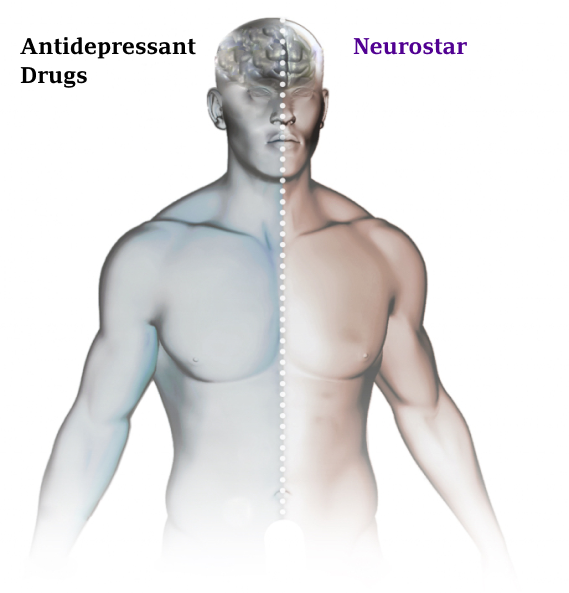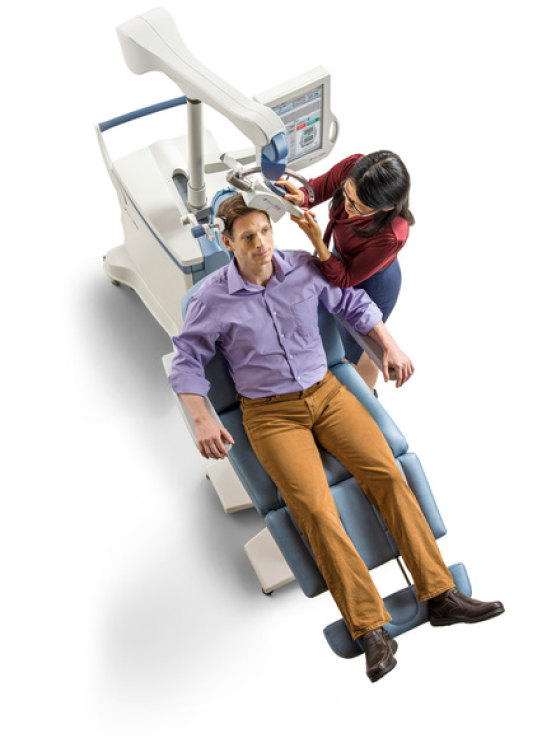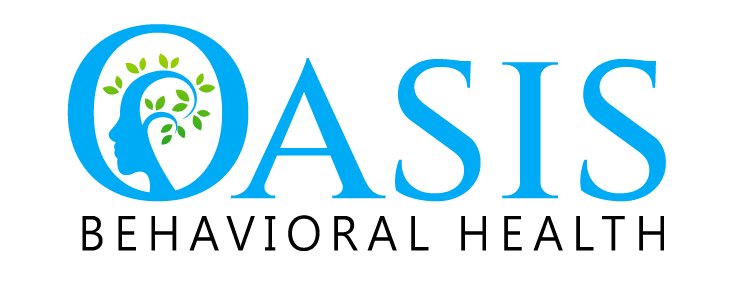Transcranial Magnetic Stimulation (TMS)
TMS therapy may be effective if you have not been responding to oral antidepressants
Transcranial Magnetic Stimulation (TMS)
At Oasis Behavioral Health, we offer Transcranial Magnetic Stimulation (TMS) as a cutting-edge, FDA-approved, non-invasive therapy for individuals struggling with depression that hasn’t responded to traditional treatments.
TMS uses a targeted magnetic coil to stimulate underactive areas of the brain responsible for mood regulation. By activating these regions, TMS helps restore healthy brain function—without the need for medication or sedation.
It’s a safe, well-tolerated treatment that brings new hope to those seeking lasting relief.

How Safe is TMS?
NeuroStar Advanced Therapy has been proven safe and effective for treating depression. Unlike traditional antidepressant medications, TMS Therapy has no systemic side effects.
The most common side effect is mild to moderate discomfort at or near the treatment area, which typically subsides after the first week. Clinical studies and real-world applications have demonstrated a strong safety profile for this treatment.
Common Questions About TMS Therapy
How does NeuroStar treatment work?
NeuroStar uses an MRI-strength magnet to stimulate areas of the brain that control mood. This increases blood flow, glucose metabolism, and neurotransmitter activity in patients with depression.
What are treatments like?
You might experience minor discomfort at the treatment site during the first week, but this typically subsides. Sessions do not require sedation, and you can read, watch TV, or converse with your treatment coordinator. Normal activities, including driving, can resume immediately afterward.
How long does each treatment last?
Clinical studies reveal that after 12 months, 45.1% of patients maintained remission, and 67.7% experienced a sustained positive response. Some patients may require additional treatments, with an average of 16 sessions for maintenance.
What are the side effects?
The most common side effect is mild discomfort at the treatment site, sometimes accompanied by a headache during the first few days. Over-the-counter pain relief can help if needed, and discomfort generally diminishes after the first five days
How long does the effect last?
Clinical studies reveal that after 12 months, 45.1% of patients maintained remission, and 67.7% experienced a sustained positive response. Some patients may require additional treatments, with an average of 16 sessions for maintenance.
What are the side effects?
The most common side effect is mild discomfort at the treatment site, sometimes accompanied by a headache during the first few days. Over-the-counter pain relief can help if needed, and discomfort generally diminishes after the first five days.
Why Choose NeuroStar Advanced Therapy?
Non-Invasive Procedure
No Negative Side Effects
Insurance Coverage
What to Expect During Treatment
During a NeuroStar Advanced Therapy session, a magnet similar in strength to an MRI machine stimulates nerve cells in the brain’s mood-regulating areas. These magnetic pulses can positively impact neurotransmitter levels, making long-term remission possible


Find Your Way to Happiness
NeuroStar Advanced Therapy is bringing hope to individuals struggling with major depression every day. Oasis Behavioral Health is dedicated to providing this proven treatment and helping you regain control of your life.
